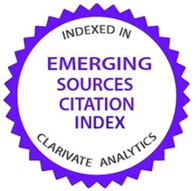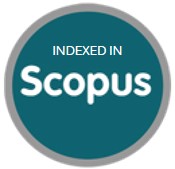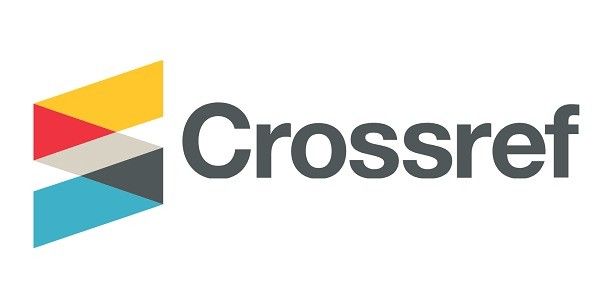El valor razonable y la conexión perdida entre contabilidad y auditoría
DOI:
https://doi.org/10.21830/19006586.35Palabras clave:
auditoría, contabilidad, costo histórico, paradigma gerencial, valor razonableResumen
Se pretende argumentar que la relación entre contabilidad y auditoría se ha perdido porque los supuestos filosóficos básicos de la auditoría no se han desarrollado tanto como sus correspondientes en el campo de la contabilidad. En tanto que la contabilidad a valor razonable representa una realidad socialmente construida, la auditoría parece siempre estar fundada en la tradición positivista de la teoría de la evidencia (Cfr. Mautz y Sharaf, 1961; AAA, 1973; Flint, 1988). El resto del trabajo se focaliza en el análisis del problema de la relación perdida entre contabilidad y auditoría, problema que se ha planteado en la sección primera (status quæstionis). En primer lugar, la siguiente sección describirá brevemente la metodología utilizada para el análisis. En la tercera sección se dará una breve descripción del cambio histórico del paradigma principal de la contabilidad, que pasa de informar la verdad a informar en coherencia con los principios de contabilidad generalmente aceptados (PCGA) y los cambios correspondientes en el paradigma principal de la auditoría, desde los tiempos antiguos hasta la auditoría moderna en el siglo XIX, que culminó con la promulgación de ASOBAC. En la cuarta sección, se analizan los avances de la última o dos últimas décadas, más concretamente, el cambio de un enfoque contable basado en la correspondencia con criterios, a un enfoque contable basado en la construcción social de consenso, como puede constatarse en el giro contable a partir de la década de 1990 en adelante con el paradigma del valor razonable. Se argumentará que la auditoría no se ha modificado en consecuencia, y que este eslabón perdido entre el enfoque ontológico de la contabilidad y de la auditoría puede acarrear problemas a los académicos, emisores de normas y profesionales. El artículo concluye con estas implicaciones y la necesidad de investigación futura.
Descargas
Referencias bibliográficas
AAA (1936). A Tentative Statement of Accounting Principles Affecting Corporate Reports, Accounting Review 187-191.
AAA (1966). ASOBAT: A Statement of Basic Accounting Theory. Sarasota, Fl: American Accounting Association.
AAA (1973). ASOBAC: A Statement of Basic Auditing Concepts. Sarasota, Fl.: American Accounting Association.
AICPA (1962). Statement by the Accounting Principles Board. New York: American Institute of Certified Public Accountants.
Alexander, D (2007). Recent history of fair value, in The Routledge Companion to Fair Value and Financial Reporting, Peter Walton, Ed. London: Routledge.
https://doi.org/10.4324/NOE0415423564.sec2
Alexander, D; Simon, A (2003). On economic reality, representational faithfulness and the 'true and fair override', Accounting & Business Research, 33(1), pp. 3-17.
https://doi.org/10.1080/00014788.2003.9729628
Alexander, S.S. (1950). Income Measurement in a Dynamic Economy, in Five Monographs on Business Income, AIA, Ed. New York: American Institute of Accountants.
Arrington, C. E; Anthony G. P. (1991). Accounting, Interests, and Rationality: A Communicative Relation, Critical Perspectives on Accounting, 2(1), pp. 31-58.
https://doi.org/10.1016/1045-2354(91)90018-9
ASB (1999). Statement of Principles for Financial Reporting. London: Accounting Standards Board.
Barley, B; Joshua, R.H (2007). Harmonization, Comparability, and Fair Value Accounting, Journal of Accounting, Auditing & Finance, 22(3), pp.493-509.
Barth, M.E.; Wayne, R. L. (1995). Fundamental Issues Relating to Using Fair Value Accounting for Financial Reporting, Accounting Horizons, 9(4), pp. 97-107.
Barth, M. E., William H. B.; & Wayne, R. L. (1996). Value-Relevance of Banks' Fair Value Disclosures under SFAS No. 107, Accounting Review, 71(4), 513-537.
Barth, M. E.; William H. B.; Wayne R. L. (2001). The relevance of the value relevance literature for financial accounting standard setting: another view, Journal of Accounting and Economics, 31(1-3), pp. 77-104.
https://doi.org/10.1016/S0165-4101(01)00019-2
Benston, G.J.; Bromwich, M.; Wagenhofer, A. (2006). Principles-versus rules-based accounting standards: The FASB's standard setting strategy, Abacus, 42(2), pp. 165-187.
https://doi.org/10.1111/j.1467-6281.2006.00196.x
Benston, G. J. (2006). Fair-value accounting: A cautionary tale from Enron, Journal of Accounting and Public Policy, 25(4), pp. 465-484.
https://doi.org/10.1016/j.jaccpubpol.2006.05.003
Benston, G. J. (2008). The shortcomings of fair-value accounting described in SFAS 157, Journal of Accounting and Public Policy, 27(2), pp. 101-114.
https://doi.org/10.1016/j.jaccpubpol.2008.01.001
Boer, G. (1966). Replacement Cost: A Historical Look, Accounting Review, 41(1), pp. 92-97.
Boyd, E. (1905/1968). History of Auditing, in A History of Accounting and Accountants, Richard Brown, Ed. London: Frank Cass & Co.
Brief, R. P. (1966). The Origin and Evolution of Nineteeth-Century Asset Accounting, Business History Review, 40(1), pp. 1-23.
https://doi.org/10.2307/3112299
Briloff, A.J. (1964). Needed: a revolution in the determination and application of accounting principles, Accounting Review, 39(1), pp. 12-15.
Briloff, A.J. (1966). Old myths and new realities in accountancy, Accounting Review, 41(3), pp. 484-495.
Briloff, A.J. (1966). The responsibilities of the CPA for fair corporate accountability, Financial Analysts Journal 22(3), pp. 51-55.
https://doi.org/10.2469/faj.v22.n3.51
Broadbent, J.; Laughlin, R. (1997). Developing empirical research: an example informed by a Habermasian approach, Accounting, Auditing & Accountability Journal, 10(5), pp. 622-648.
https://doi.org/10.1108/09513579710194027
Bromwich, M. (2007). Fair Values: Imaginary Prices and Mystical Markets, in The Routledge Companion to Fair Value and Financial Reporting, Peter Walton, Ed. London: Routledge.
https://doi.org/10.4324/NOE0415423564.ch5
PMid:17688729 PMCid:PMC2048604
Brown, R. G. (1962). Changing Audit Objectives and Techniques, Accounting Review, 37(4), pp. 696-703.
Brown, R. E. (1905/1968). A History of Accounting and Accountants. London: Frank Cass & Co.
Canning, J. B. (1929/1978). The Economics of Accountancy. A Critical Analysis of Accounting Theory, in The Development of Contemporary Accounting Thought, Gary John Previts and Basil S. Yamey and Stephen A. Zeff, Eds. New York: Arno Press.
Carmona, S. 2004. Accounting history research and its diffusion in an international context, Accounting History, 9(3), pp. 7-23.
https://doi.org/10.1177/103237320400900302
Carson, A.B. (1949) . A "Source and Application of Funds" Philosophy of Financial Accounting, The Accounting Review, 24(2), pp. 159-170.
Chambers, R. J. (1962). Towards a general theory of accounting. Melbourne: Australian Society of Accountants.
Chambers, R. J. (1966). Accounting, Evaluation and Economic Behaviour. Englewood Cliffs, NJ: Prentice Hall.
Chambers, R. J. (1968), "Measures and Values," Accounting Review, 43 (2), 239-247.
Chambers, R. J. & P. W. Wolnizer (1991). A true and fair view of position and results: the historical background, Accounting, Business & Financial History, 1(2), pp. 197-213.
https://doi.org/10.1080/09585209100000029
Chandler, R.; Edwards, J.R. (1996). Recurring issues in auditing: back to the future? Accounting, Auditing & Accountability Journal, 9(2), pp. 4-29.
https://doi.org/10.1108/09513579610116330
Chandler, R.A. (1997). Judicial views on auditing from the nineteenth century, Accounting History, 2(1), pp. 61-80.
https://doi.org/10.1177/103237329700200104
Chatfield, M. (1974). A History of Accounting Thought. Hinsdale, Illinois: The Dryden Press.
Chua, W.F. (1986). Radical Developments in Accounting Thought, The Accounting Review, 61(4), pp. 601-632.
Costouros, G. J. (1978). Auditing in the Athenian State of the Golden Age (500-300 BC), Accounting Historians Journal, 5(1), pp. 41-50.
Dicksee, L.R. (1933). Auditing. London: Gee & Co.
EC (2010). COM (2010) 561 Green Paper. Audit Policy: Lessons from the Crisis. Brussel: European Commission.
Edwards, E. O.; Phillip W. B. (1961). The theory and measurement of business income. Berkeley: University of California Press.
Elliott, R.K.; Jacobson, P.D. (1987). Audit technology: A heritage and a promise, Journal of Accountancy, 163, pp. 198-217.
FASB (1980). Statement of Financial Accounting Concepts No. 2. Qualitative Characteristics of Accounting Information. Norwalk, CT: Financial Accounting Standards Board.
FASC (2000). Response to the FASB Preliminary Views: Reporting Financial Instruments and Certain Related Assets and Liabilities at Fair Value, Accounting Horizons, 14(4), pp. 501-508.
https://doi.org/10.2308/acch.2000.14.4.501
FASC (2005). Response to the FASB's Exposure Draft on Fair Value Measurements, Accounting Horizons, 19(3), pp. 187-196.
https://doi.org/10.2308/acch.2005.19.3.187
FASC (2007), The FASB's Conceptual Framework for Financial Reporting: A Critical Analysis, Accounting Horizons, 21(2), pp. 229-238.
https://doi.org/10.2308/acch.2007.21.2.229
Flint, D. (1971). The role of the auditor in modern society: an exploratory essay, Accounting and Business Research, 1(1), pp. 287-293.
https://doi.org/10.1080/00014788.1971.9728980
Flint, D. (1988). Philosophy and Principles of Auditing: An Introduction. Basingstoke: Macmillan Press.
Fogarty, T.J.; Hussein, M.E.A.; Ketz, J.E. (1994). Political Aspects of Financial Accounting Standard Setting in the USA, Accounting, Auditing & Accountability Journal, 7(4), pp. 24-46.
https://doi.org/10.1108/09513579410069830
Georgiou, O.; Jack. L (2011). In pursuit of legitimacy: A history behind fair value accounting, British Accounting Review. In Press (doi:10.1016/j.bar.2011.08.001).
https://doi.org/10.1016/j.bar.2011.08.001
Gerboth, D.L. (1972). Muddling through with the APB, Journal of Accountancy, 133, pp. 42-49.
Gerboth, D.L. (1973). Research, Intuition, and Politics in Accounting Inquiry, The Accounting Review, 3, pp. 475-482.
Habermas, J. (1984). The Theory of Communicative Action. Volume 1: Reason and the Rationalization of Society (Thomas McCarthy, Trans.). Boston: Beacon Press.
Habermas, J. (1990). Discourse Ethics: Notes on a Program of Philosophical Justification, in Moral consciousness and communicative action. Cambridge: Polity Press.
PMid:2075228
Hines, R. D. (1988). Financial accounting: In communicating reality, we construct reality. Accounting, Organizations and Society, 13(3), pp. 251-261.
https://doi.org/10.1016/0361-3682(88)90003-7
Hines, R. D. (1991). The FASB's Conceptual Framework, Financial Accounting and the Maintenance of the Social World, Accounting, Organisations and Society, 16(4), pp. 313-331.
https://doi.org/10.1016/0361-3682(91)90025-A
Horngren, C.T. (1973). The marketing of accounting standards, Journal of Accountancy, 136(4), pp. 61-66.
House of Commons Treasury Committee (2009). Banking Crisis: reforming corporate governance and pay in the city. London: House of Commons.
IAASB (2008). Challenges in Auditing Fair Value Accounting Estimates in the Current Market Environment. London: IAASB Staff Audit Practice Alert.
IASB (2009). ED/2009/5 Fair Value Measurement. London: International Standards Accounting Board.
IASB (2010). ED/2010/7 Measurement Uncertainty Analysis Disclosure for Fair Value Measurements. London: International Accounting Standards Board.
IASB (2011). IFRS 13 Fair Value Measurement. London: International Accounting Standards Board.
IASC (1989). Framework for the Preparation and Presen-tation of Financial Statements. London: International Accounting Standards Committee.
IASC/CICA (1998). Steering Committee on Financial Instruments, "Accounting for Financial Assets and Financial Liabilities", Accounting Horizons, 12(1), pp. 90-97.
ICAS (2010). Should Statutory Audit be droppend and Assurance needs left to the Market?. London: The Institute of Chartered Accountants of Scotland.
Ingram, R. W.; Frank R. R. (1989). Representational faithfulness and economic consequences: Their roles in accounting policy, Journal of Accounting and Public Policy, 8(1), pp. 57-68.
https://doi.org/10.1016/0278-4254(89)90011-2
Jeppesen, K.K. (2010). Strategies for dealing with standard-setting resistance, Accounting, Auditing & Accountability Journal, 23(2), pp. 175-200.
https://doi.org/10.1108/09513571011023183
Jones, M. J. (2008). Internal control, accountability and corporate governance. Medieval and modern Britian compared, Accounting, Auditing & Accountability Journal, 21 (7), pp. 1052-1075.
https://doi.org/10.1108/09513570810907474
Kenny, S.Y.; Larson, R.K. (1993). Lobbying behaviour and the development of international accounting standards, European Accounting Review, 3, pp. 531-554.
https://doi.org/10.1080/09638189300000050
Kitchen, J. (1982). Auditing: past development and current practice, in Auditing Research: Issues and Opportunities, Anthony Hopwood and M. Bromwich and J. Shaw, Eds. London: Pitman Books.
PMCid:PMC2044632
Landsman, W. R. (2007). Is fair value accounting information relevant and reliable? Evidence from capital market research, Accounting & Business Research, 38(1), pp. 19-30.
https://doi.org/10.1080/00014788.2007.9730081
Laughlin, R. (1987). Accounting Systems in Organisational Contexts: A Case for Critical Theory, Accounting, Organizations and Society, 12(5), pp. 479-502.
https://doi.org/10.1016/0361-3682(87)90032-8
Laughlin, R. C. (1995). Empirical research in accounting: alternative approaches and a case for "middle-range" thinking, Accounting, Auditing & Accountability Journal, 8(1), pp. 63-87.
https://doi.org/10.1108/09513579510146707
Laux, C.; Leuz, Christian. (2009). the crisis of fair-value accounting: Making sense of the recent debate, Accounting, Organizations and Society, 34(6-7), pp. 826-834.
Lee, T.A. (1993). Corporate Audit Theory (1st ed.). London: Chapman & Hall.
Lee, T.A. (1994). Financial Reporting Quality Labels. The Social Construction of the Audit Profession and the Expectations Gap, Accounting, Auditing and Accountability Journal, 7(2), pp. 30-49.
https://doi.org/10.1108/09513579410058256
Lee, T.A. (2006a). The FASB and Accounting for Economic Reality, Accounting & the Public Interest, 6. pp. 1-21.
https://doi.org/10.2308/api.2006.6.1.1
Lee, T.A. (2006b). Cunning Plans, Spinners, and Ideologues: Blackadder and Baldrick Try Accounting for Economic Reality, Accounting & the Public Interest, 6, pp. 45-50.
https://doi.org/10.2308/api.2006.6.1.45
Lee, T.A. (2008). Book Review: The Routledge Companion to Fair Value and Financial Reporting, Accounting & Business Research, 38(1), pp. 93-96.
https://doi.org/10.3200/aafs.35.1.53-56
https://doi.org/10.1016/j.humpath.2007.10.007
https://doi.org/10.1016/j.biocon.2007.09.022
https://doi.org/10.1016/j.biocon.2007.09.021
Liempd, D.V.; Zachariassen. F. (2011). Historical Macro Trends in Auditing's Validity Claims, Paper presented at 34th Annual Congress European Accounting Association. Rome: Italy.
PMCid:PMC3490499
Linsmeier, T. J.; Boatsman, J. R.; Herz, R. H.; Jennings, R. G.; Jonas, G. J.; Mark, H. L.; Petroni, K. R.; Shores, D.; James M. W. (1998). Response to a Discussion Paper Issued by the International Auditing and Assurance Standards Board (2008). Challenges in auditing fair value accounting estimates in the current market environment. New York: IFAC Staff Audit Practice Alert.
Littleton, A.C. (1966). Accounting Evolution to 1900. New York: Garland Publishing Inc.
PMCid:PMC2138257
Macintosh, N.B. (2009). Accounting and the Truth of Earnings Reports: Philosophical Considerations, European Accounting Review 18(1), pp. 141-175.
https://doi.org/10.1080/09638180802327073
Macintosh, N. B. (2006). Accounting—Truth, Lies, or "Bullshit"? A Philosophical Investigation, Accounting & the Public Interest, 6, pp. 22-36.
https://doi.org/10.2308/api.2006.6.1.22
MacNeal, K. (1939). Truth in Accounting. Houston, TX: Scholars Book Co.
https://doi.org/10.9783/9781512804041
Marc (2010). The Value of Audit. Maastricht: Maastricht Accounting, Auditing and Information Management Research Center.
Masocha, V.; W, P. (2007). Rhetoric in standard setting: the case of the going-concern audit, Accounting, Auditing & Accountability Journal, 20(1), pp. 74-100.
https://doi.org/10.1108/09513570710731218
Mautz, R.K.; Sharaf, H. A. (1961). The Philosophy of Auditing. Sarasota: American Accounting Association.
McCarthy, Thomas (1976/1997). Translator's Introduction, in Legitimation Crisis, Jürgen, H. Ed. Cambridge: Polity Press.
McKernan, J.F. (2007). Objectivity in accounting, Accounting, Organizations and Society, 32(1/2), pp. 155-180.
https://doi.org/10.1016/j.aos.2006.03.008
Miller, P.; Hopper, T.; Laughlin, R. (1991). The New Accounting History: An Introduction, Accounting, Organizations and Society, 16(5/6), pp. 395-403.
https://doi.org/10.1016/0361-3682(91)90036-E
Mills, G. T. (1994). Early Accounting in Northern Italy: The role of commercial development and the printing press in the expansion of double-entry from Genoa, Florence and Venice, Accounting Historians Journal, 21(1), pp. 81-96.
Moonitz, M. (1974). Obtaining agreement on standards in the accounting profession. Sarasota, FL.: American Accounting Association.
Moonitz, M. (1961/1982). Accounting Research Study No.1 The Basic Postulates of Accounting, in The Accounting Postulates and Principles Controversy of the 1960s, Stephen A. Zeff, Ed. New York: American Institute of Certified Public Accountants/Garland Publishing Inc.
Mouck, T. (2004). Institutional reality, financial reporting and the rules of the game, Accounting, Organizations and Society, 29(5/6), pp. 525-541.
https://doi.org/10.1016/S0361-3682(03)00035-7
Moxter, A. (1982). Betriebswirtschaftliche Gewinnermittlung. Tübingen: J.C.B. Mohr (Paul Siebeck).
Napier, C.J. (2001). Accounting history and accounting progress, Accounting History, 6(2), pp. 7-31.
https://doi.org/10.1177/103237320100600202
Pacioli, L. (1494/1924). Double Treatise on Double-Entry Bookkeeping (Pietro Crivell, Trans.). London: Institute of Book-Keepers.
Paton, W.A.; Littleton, A.C. (1940). Monograph No.3: An Introduction to Corporate Accounting Standards, Sarasota, FL: American Accounting Association.
PMid:17790743
Pong, C.; Power, M.K.; Whittington, G. (1996). The Withdrawal of Current Cost Accounting in the United Kingdom: A Study of the Accounting Standards Committee, Abacus, 32(1), p. 30.
https://doi.org/10.1111/j.1467-6281.1996.tb00449.x
Power, M.K. (1992). From common sense to expertise: Reflections on the prehistory of audit sampling, Accounting, Organizations and Society, 17(1), pp. 37-62.
https://doi.org/10.1016/0361-3682(92)90035-Q
Power, M.K. (1993). The politics of financial auditing, Political Quarterly, 64(3), p. 272.
https://doi.org/10.1111/j.1467-923X.1993.tb00344.x
Power, M.K. (1994). The Audit Explosion. London: Demos.
Power, M.K. (1996). Making Things Auditable, Accounting, Organizations and Society, 21(2/3), pp. 289-315.
https://doi.org/10.1016/0361-3682(95)00004-6
Power, M.K. (1997). The Audit Society. Oxford: Oxford University Press.
Power, M.K. (2010). Fair value accounting, financial economics and the transformation of reliability, Accounting and Business Research, 40(3), pp. 197-210.
https://doi.org/10.1080/00014788.2010.9663394
Jacques, R. (2004). The Secret Past of Fair Value: Lessons from History Applied to the French Case, Accounting in Europe, 1, pp. 95-107.
https://doi.org/10.1080/0963818042000262766
Ronen, Joshua (2008). To Fair Value or Not to Fair Value: A Broader Perspective, Abacus, 44(2), pp. 181-208.
https://doi.org/10.1111/j.1467-6281.2008.00257.x
Rorem, C.R. (1929). Replacement Cost in Accounting Valuation, The Accounting Review, 4(3), pp. 167-174.
Ruland, R.G. (1984). Duty, obligation, and responsibility in accounting policy making, Journal of Accounting and Public Policy, 3(3), pp. 223-237.
https://doi.org/10.1016/0278-4254(84)90018-8
Schipper, K. (2003). Principles-Based Accounting Standards, Accounting Horizons, 17(1), pp. 61-72.
https://doi.org/10.2308/acch.2003.17.1.61
Searle, J.R. (1995). The Construction of Social Reality. New York: Free Press.
Shapiro, B. P. (1997). Objectivity, relativism, and truth in external financial reporting: What's really at stake in the disputes?, Accounting, Organizations and Society, 22(2), pp. 165-185.
https://doi.org/10.1016/S0361-3682(96)00017-7
Simon, H.V. (1899). Die Bilanzen der Aktiengesellschaften und der Kommanditgesellschaften auf Aktien (3rd ed.). Berlin: J. Guttentag.
Sismondo, S. (1993). Some Social Constructions, Social Studies of Science, 23(3), pp. 515-553.
https://doi.org/10.1177/0306312793023003004
Solomons, D. (1978, November). The Politicization of Accounting, Journal of Accountancy, pp. 65-72.
Solomons, D. (1983, Spring). The Political Implications of Accounting and Accounting Standard Setting, Accounting and Business Research, pp. 107-118.
https://doi.org/10.1080/00014788.1983.9729739
Solomons, D. (1991). Accounting and social change: a neutralist view, Accounting, Organizations and Society, 16(3), pp. 287-295.
https://doi.org/10.1016/0361-3682(91)90005-Y
Solomons, D. (1995). Criteria for choosing an accounting model, Accounting Horizons, 9(1), pp. 42-51.
Sprouse, R.; Moonitz, M. (1962/1982). Accounting Research Study No. 3: A tentative set of broad accounting principles for business enterprises, in The Accounting Postulates and Principles Controversy of the 1960s, Stephen A. Zeff, Ed. New York: American Institute of Certified Public Accountants/Garland Publishing Inc.
Sterling, R. R. (1967). A Statement of Basic Accounting Theory: A Review Article, Journal of Accounting Research, 5 (1), pp. 95-112.
https://doi.org/10.2307/2489988
Sterling, R. R. (1970). On Theory Construction and Verification, The Accounting Review, 45(3), pp. 444-457.
Sterling, R. R. (1972). Decision Oriented Financial Accounting, Accounting and Business Research, 2, pp. 198-208.
https://doi.org/10.1080/00014788.1972.9728598
Stone, W.E. (1969). Antecedents of the Accounting Profession, The Accounting Review, 44(2), pp. 284-291.
Storey, R.K. (1959, April). Revenue realization, going concern and measurement of income, Accounting Review, pp. 232-238.
Sutton, T.G. (1984). Lobbying of accounting standard-setting bodies in the UK and the USA: a Downsian analysis, Accounting, Organizations and Society, 9(1), pp. 81-95.
https://doi.org/10.1016/0361-3682(84)90031-X
Toba, Y. (1975). A general theory of evidence as the conceptual foundation in auditing theory, Accounting Review, 50(1), pp. 7-24.
Tweedie, D.P.; Whittington, G. (1997). The end of the current cost revolution, in The development of accounting in an international context, T. Cooke and C.W. Nobes, Eds. London: Routledge.
https://doi.org/10.4324/9780203013410.ch8
Walton, P. Ed. (2007). The Routledge Companion to Fair Value and Financial Reporting. London: Routledge.
https://doi.org/10.4324/9780203815151
Watts, R.L.; Zimmerman, J.L. (1978, January). Towards a Positive Theory of the Determination of Accounting Standards, The Accounting Review, pp. 112-134.
Wells, M.C. (1976). A revolution in accounting thought?, Accounting Review, 51(3), pp. 471-482.
Wilson, A. Ernst; Young, J.J (2001). Fair Value and Measurement: Where the Conflicts Lie, Balance Sheet, 9(4), pp. 26-33.
https://doi.org/10.1108/09657960110696735
Young, J.J.; Mouck, T. (1996). Objectivity and the role of history in the development and review of accounting standards, Accounting, Auditing & Accountability Journal, 9(3), pp. 127-147.
https://doi.org/10.1108/09513579610122036
Zack, G. M. (2009). Fair Value Accounting Fraud. New Global Risks and Detection Techniques. Hoboken, NJ: John Wiley & Sons.
Zeff, S.A. (1978, December). The Rise of "Economic Consequences", Journal of Accountancy, pp. 56-63.
Zeff, S.A. (1982). Truth in Accounting: The Ordeal of Kenneth MacNeal, Accounting Review, 57(3), p. 528.
Zeff, S.A. (2003). How the U.S. Accounting Profession Got Where It Is Today: Part I, Accounting Horizons, 17(3), pp. 189-205.
https://doi.org/10.2308/acch.2003.17.3.189
Zijl, T.V; Whittengton, G. (2006). Deprival Value and Fair Value: a reinterpretation and a reconciliation, Accounting & Business Research, 36(2), pp. 121-130.
Descargas
Publicado
Cómo citar
Número
Sección
| Estadísticas de artículo | |
|---|---|
| Vistas de resúmenes | |
| Vistas de PDF | |
| Descargas de PDF | |
| Vistas de HTML | |
| Otras vistas | |

























